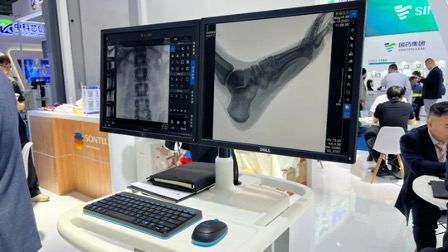In the modern day, there is a movement toward minimally invasive procedures. This helps to limit the risks for the patient and can make things easier for the surgeon too. With this said, there is also a need to work in more mobile settings. This is where a mobile C-arm system can be useful, a type of radiology tool that has gained significant recognition recently. We take a closer look at the use of these mobile tools in certain procedures.
Role of Mobile C-arm in Minimally Invasive Interventions
Many procedures that were considered invasive a few years ago are no longer. Moving toward minimally invasive procedures can make a significant difference when it comes to attending to the needs of the patient. It also reduces scarring and helps in the prevention of infections.
A mobile C-arm system can produce real-time imaging[1] that serves as a guide during these procedures. There are several types of procedures that can ultimately benefit from the use of these devices. They also offer a number of potential benefits for a medical setting:
- A mobile C-arm system is very flexible and can be effectively adjusted according to the needs of the patient and medical staff that are involved in the minimally invasive procedure.
- The mobility of these devices also ensures they can be moved around easily and they will not take up a significant amount of space in the office.
- Due to the use of a C-arm, it’s also possible to easily adjust the angle and position of the imaging system. This further adds to the versatility that the device brings to the medical setting.
- The use of advanced technology helps to produce better quality images[2]during the minimally invasive procedure. This ensures the accuracy of the procedure and allows the surgeon to perform tasks with greater visibility.
- Certain mobile C-arm devices can be integrated with surgical navigation systems. This can further enhance the overall precision surgeons are able to achieve when they perform minimally invasive procedures.
Introduction to the SONTU600-Saturn Mobile C-arm
There are several solutions available when it comes to setting up a mobile C-arm system in an office where minimally invasive procedures will be performed. Not all of these devices offer equal quality imaging and the same efficacy.
The SONTU600-Saturn Mobile C-arm from SONTU is an advanced solution that offers a wide variety of functions to ease the process. Low-dose radiation control is also one of the key benefits that come with the use of this particular mobile C-arm solution. It is especially important in cases where imaging tests and certain procedures need to be done on pediatric patients.
Additionally, the system integrates the latest imaging technologies to provide greater visibility while a procedure is being performed. This results in greater service quality from the surgeon’s perspective while also enhancing overall safety and minimizing the risks associated with these procedures.
Integration with a surgical navigation system can also provide a more automated method for navigating the patient’s tissues when performing bone-related procedures that are considered to be minimally invasive. This can help to ensure surgeons are able to expand on the number of potential conditions they can work with when reducing the invasiveness of in-office procedures.
The compact size of the device also ensures it will easily fit into different types of facilities, including smaller offices where the primary focus is on providing diagnostic services to the patient.
Superior X-ray Dose Control
One of the major concerns that still remains a problem in the modern day is radiation exposure during the X-ray imaging process. The radiation has been associated with a number of concerns, including the possibility of cancer.
With a solution like the SONTU600-Saturn Mobile C-arm, it is now possible for the surgeon and other medical staff to have more control over the amount of radiation that the patient is exposed to. This becomes an incredibly important feature when the imaging system will be used for a longer duration of time – such as when performing these procedures.
There is a rotating anode tube that has a power rating of 5kW alongside focal spots that measure 0.3mm and 0.6mm. What this means is the system is able to capture fine details when performing these procedures, but without causing a significant level of radiation exposure.
This adds to the overall safety that comes with using imaging solutions as guidance while performing minimally invasive procedures.
Conclusion
For more than a decade, SONTU has been creating diagnostics systems that help medical settings improve the diagnostics process for patients. The company is also actively involved in researching new technologies and methods that can be used to make the diagnosis of various diseases and bone fractures and evaluating implants easier than ever before. Get in touch to learn more about the variety of diagnostic solutions that are available from SONTU.
References
- https://www.ncbi.nlm.nih.gov/books/NBK232483/
- https://www.ncbi.nlm.nih.gov/pmc/articles/PMC6639855/


